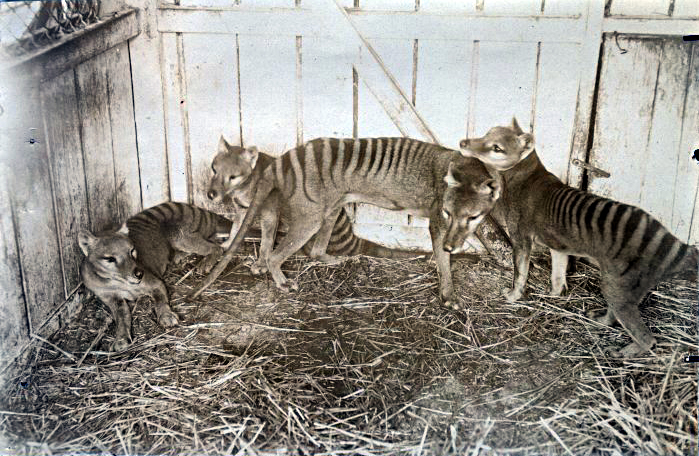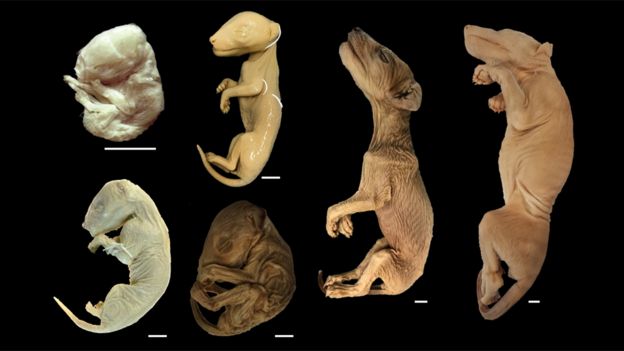One of the questions that has always concerned me is how far will we go to undo the damage that we have done to the environment.
This sculpture shows a humanoid chimera based on the extinct thylacine — or Tasmanian tiger — which were hunted to extinction because we thought that they were eating our precious sheep. But actually the losses weren’t that high, and it was more likely the result of introduced dogs.
 |
|---|
| Thylacine family at Beaumaris Zoo in Hobart, 1910. |
The work represents the fantasy of bringing back the thylacines, of undoing the extinction that we caused. This seems like a great idea, but does it distract from looking after the animals that still exist but are on the verge of extinction themselves.
I know I sound critical but really, I’d love to see the thylacines come back to life. They were beautiful, nocturnal, marsupials that looked like a dog with a backwards pouch. And the males had one too, which is strange and cool! I mean I totally get it. One thing I can say is that I love the wonderful, strange diversity of nature. That’s the thing about my work. I’m not here to tell you what we should or shouldn’t do. What I want to do is give you the space to think about it yourself.
What is interesting about thylacines is that we have so many joeys in formaldehyde in museums that we almost have enough genetic material to succeed, but not quite. We also don’t have a viable egg. However, with a new technology called CRISPR, we can use the genetic material we do have to clone a thylacine using another marsupial relative like a kangaroo. That’s part of why my creatures are shown as chimeras, because even if we do reincarnate the thylacines, they will have to be blended with another animal. So, will they actually be thylacines?
 |
|---|
| Thylacine embryos, scanned by University of Melbourne. |
This brings together so many interesting questions. Would these creatures even be ‘natural’? Is this part of evolution, or is it in fact the future of evolution? After all, evolution is just a long series of lucky accidents over time within favourable conditions; a miracle constantly repeated. Is human directed evolution different?
I love thinking about these ideas, and the ethical questions they throw up. I also like juxtaposing these fairly rational discussions with the emotional response we get to these creatures that are both strange yet somehow conceivable.
 |
|---|
| Thomas Kennington, Homeless, 1890. Bendigo Art Gallery. |
Visually, the work is inspired by one of my favourite paintings, “Homeless” by Thomas Kennington which is at the Bendigo Art Gallery. It shows a woman cradling a child on the streets of a grey, nineteenth-century industrial city. It’s a sad and moving image, but also a very political one, arguing that the problems of the everyday world are valid subjects for art. I also love the way that it uses emotion to discuss an important social issue. There is a sincerity to it that some people find a bit too much, but that I really connect with.
